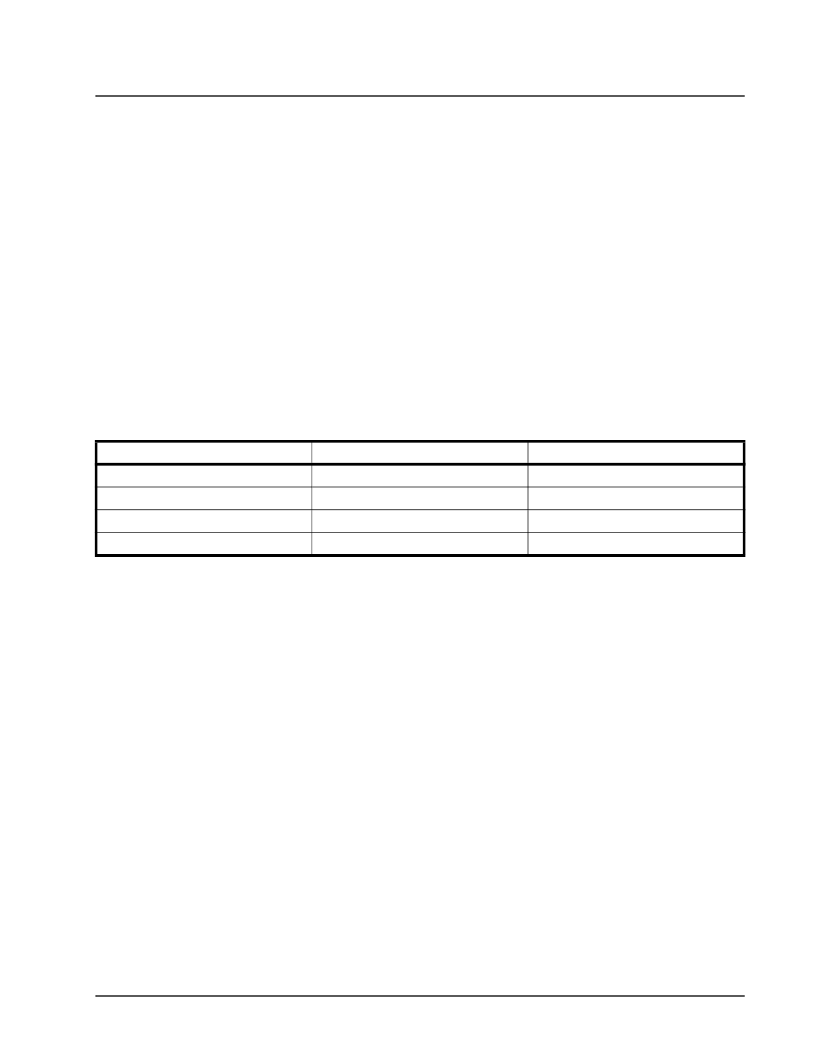- 您現(xiàn)在的位置:買賣IC網 > PDF目錄376460 > XRT7245 (Exar Corporation) DS3 ATM User Network Interface(DS3異步傳輸模式用戶網絡接口) PDF資料下載
參數(shù)資料
| 型號: | XRT7245 |
| 廠商: | Exar Corporation |
| 英文描述: | DS3 ATM User Network Interface(DS3異步傳輸模式用戶網絡接口) |
| 中文描述: | DS3自動柜員機用戶網絡接口(DS3異步傳輸模式用戶網絡接口) |
| 文件頁數(shù): | 233/324頁 |
| 文件大小: | 4103K |
| 代理商: | XRT7245 |
第1頁第2頁第3頁第4頁第5頁第6頁第7頁第8頁第9頁第10頁第11頁第12頁第13頁第14頁第15頁第16頁第17頁第18頁第19頁第20頁第21頁第22頁第23頁第24頁第25頁第26頁第27頁第28頁第29頁第30頁第31頁第32頁第33頁第34頁第35頁第36頁第37頁第38頁第39頁第40頁第41頁第42頁第43頁第44頁第45頁第46頁第47頁第48頁第49頁第50頁第51頁第52頁第53頁第54頁第55頁第56頁第57頁第58頁第59頁第60頁第61頁第62頁第63頁第64頁第65頁第66頁第67頁第68頁第69頁第70頁第71頁第72頁第73頁第74頁第75頁第76頁第77頁第78頁第79頁第80頁第81頁第82頁第83頁第84頁第85頁第86頁第87頁第88頁第89頁第90頁第91頁第92頁第93頁第94頁第95頁第96頁第97頁第98頁第99頁第100頁第101頁第102頁第103頁第104頁第105頁第106頁第107頁第108頁第109頁第110頁第111頁第112頁第113頁第114頁第115頁第116頁第117頁第118頁第119頁第120頁第121頁第122頁第123頁第124頁第125頁第126頁第127頁第128頁第129頁第130頁第131頁第132頁第133頁第134頁第135頁第136頁第137頁第138頁第139頁第140頁第141頁第142頁第143頁第144頁第145頁第146頁第147頁第148頁第149頁第150頁第151頁第152頁第153頁第154頁第155頁第156頁第157頁第158頁第159頁第160頁第161頁第162頁第163頁第164頁第165頁第166頁第167頁第168頁第169頁第170頁第171頁第172頁第173頁第174頁第175頁第176頁第177頁第178頁第179頁第180頁第181頁第182頁第183頁第184頁第185頁第186頁第187頁第188頁第189頁第190頁第191頁第192頁第193頁第194頁第195頁第196頁第197頁第198頁第199頁第200頁第201頁第202頁第203頁第204頁第205頁第206頁第207頁第208頁第209頁第210頁第211頁第212頁第213頁第214頁第215頁第216頁第217頁第218頁第219頁第220頁第221頁第222頁第223頁第224頁第225頁第226頁第227頁第228頁第229頁第230頁第231頁第232頁當前第233頁第234頁第235頁第236頁第237頁第238頁第239頁第240頁第241頁第242頁第243頁第244頁第245頁第246頁第247頁第248頁第249頁第250頁第251頁第252頁第253頁第254頁第255頁第256頁第257頁第258頁第259頁第260頁第261頁第262頁第263頁第264頁第265頁第266頁第267頁第268頁第269頁第270頁第271頁第272頁第273頁第274頁第275頁第276頁第277頁第278頁第279頁第280頁第281頁第282頁第283頁第284頁第285頁第286頁第287頁第288頁第289頁第290頁第291頁第292頁第293頁第294頁第295頁第296頁第297頁第298頁第299頁第300頁第301頁第302頁第303頁第304頁第305頁第306頁第307頁第308頁第309頁第310頁第311頁第312頁第313頁第314頁第315頁第316頁第317頁第318頁第319頁第320頁第321頁第322頁第323頁第324頁

á
PRELIMINARY
DS3 UNI FOR ATM
XRT7245
REV. 1.03
233
2.
The received Flag Sequence octet could be just
one of many Flag Sequence octets that are
transmitted via the DS3 Transport Medium, dur-
ing idle periods between the transmission of
LAPD Messages.
The LAPD Receiver will negate the “Flag Present” bit
as soon as it has received an octet that is something
other than the “Flag Sequence” octet. At this point,
the LAPD Receiver should be receiving either octet #2
of the incoming LAPD Message, or an Abort Sequence
(e.g., a string of seven or more consecutive “1s”). If
this next set of data is an abort sequence, then the
LAPD Receiver will assert the RxAbort bit (Bit 6) of
the Rx DS3 LAPD Status Register. However, if this
next octet is Octet #2 of an incoming LAPD Message,
then the Rx DS3 LAPD Status Register will begin to
present some additional status information on this
incoming message. Each of these indicators are
presented below in sequential order.
Bit 3—RxCR Type—C/R (Command/Response)
Type
This bit-field reflects the contents of the C/R bit-field
within octet #2 of the LAPD Frame Header. When
this bit is “0” it means that this message is originating
from a customer installation. When this bit is “1” it
means that this message is originating from a net-
work terminal.
Bit 4, 5—RxLAPD Type[1, 0]—LAPD Message Type
The combination of these two bit fields indicate the
Message Type and the Message Size of the incoming
LAPD Message frame. The following table relates the
values of Bits 4 and 5 to the Incoming LAPD Message
Type/Size.
Note:
The Message Size pertains to the size of the “Infor-
mation portion” of the LAPD Message Frame (as presented
in Table 49).
Bit 3—Flag Present
The LAPD Receiver should receive another “Flag
Sequence” octet, which marks the End of the Message.
Therefore, this bit field should be asserted once again.
Bit 1—EndOfMessage—End of LAPD Message
Frame
Upon receipt of the closing “Flag Sequence” octet,
this bit-field should be asserted. The assertion of this
bit-field indicates that a LAPD Message Frame has
been completely received. Additionally, if this newly
received LAPD Message is different from the previous
message, then the LAPD Receiver will inform the local
μC/μP of the “EndOfMessage” event by generating
an interrupt.
Bit 2—RxFCSErr—Frame Check Sequence Error
Indicator
The LAPD Receiver will take the incoming LAPD
Message and compute its own version of the Frame
Check Sequence (FCS) word. Afterwards, the LAPD
Receiver will compare its computed value with that it
has received from the “Far-End” Transmitter. If these
two values match, then the LAPD Receiver will
presume that the LAPD Message has been properly
received; and the contents of the Received LAPD
Message (payload portion) will be retained at loca-
tions DEh through 135h in on-chip RAM. The LAPD
Receiver will indicate an “error-free” reception of the
LAPD Message by keeping this bit field negated
(Bit 2 = 0). However, if these two FCS values do not
match, then the received LAPD Message is corrupted;
and the user is advised not to process this erroneous
information. The LAPD Receiver will indicate errored
receipt of this message by setting this bit-field to “1”.
Note:
The Receive DS3 Framer will not generate an inter-
rupt to the local μP due to the detection of an FCS error.
Therefore, the user is advised to “validate” each and every
received LAPD message by checking this bit-field prior to
processing the LAPD message.
Removal of Stuff Bits from the Payload Portion
of the incoming LAPD Message
While the LAPD Receiver is receiving a LAPD Message,
it has the responsibility of removing all of the “0” stuff
bits from the Payload Portion of the incoming LAPD
T
ABLE
50: T
HE
R
ELATIONSHIP
BETWEEN
R
X
LAPDT
YPE
[1:0]
AND
THE
RESULTING
LAPD M
ESSAGE
TYPE
AND
SIZE
.
R
X
LAPD T
YPE
[1, 0]
M
ESSAGE
T
YPE
M
ESSAGE
S
IZE
00
Test Signal Identification
76 bytes
01
Idle Signal Identification
76 bytes
10
CL Path Identification
76 bytes
11
ITU-T Path Identification
82 bytes
相關PDF資料 |
PDF描述 |
|---|---|
| XRT7288IP | CEPT1 Line Interface |
| XRT7288 | CEPT1 Line Interface(CEPT1線接口) |
| XRT7288IW | CEPT1 Line Interface |
| XRT7295AE | E3 (34.368Mbps) Integrated line Receiver |
| XRT7295AE_03 | E3 (34.368Mbps) Integrated line Receiver |
相關代理商/技術參數(shù) |
參數(shù)描述 |
|---|---|
| XRT7250 | 制造商:EXAR 制造商全稱:EXAR 功能描述:DS3/E3 FRAMER IC |
| XRT7250ES-PCI | 功能描述:界面開發(fā)工具 Evaluation Board for XRT7250 Series RoHS:否 制造商:Bourns 產品:Evaluation Boards 類型:RS-485 工具用于評估:ADM3485E 接口類型:RS-485 工作電源電壓:3.3 V |
| XRT7250IQ100 | 制造商:EXAR 制造商全稱:EXAR 功能描述:DS3/E3 FRAMER IC |
| XRT7288 | 制造商:EXAR 制造商全稱:EXAR 功能描述:CEPT1 Line Interface |
| XR-T7288 | 制造商:EXAR 制造商全稱:EXAR 功能描述:CEPT1 Line Interface |
發(fā)布緊急采購,3分鐘左右您將得到回復。